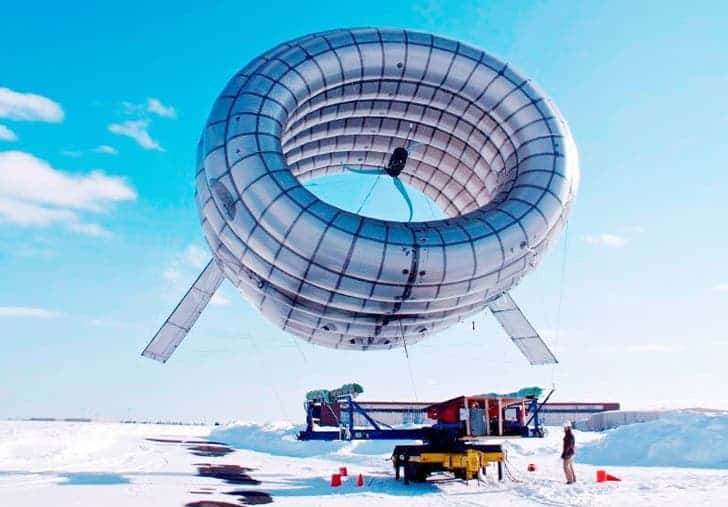
Floating wind farms may seem like something out of a science fiction novel, but a MIT start-up called Altaeros Energies just unveiled an enormous helium-filled wind turbine which will hover 1,000 feet above ground for 18 months. The turbine, called Altaeros BAT, is a part of a pilot program aimed at demonstrating that airborne wind turbines are feasible.
A wind turbine is most efficient when its blades hit an optimal wind speed. The higher you go above ground, the more powerful the winds are, so naturally wind turbine design has evolved to accommodate ever higher altitudes. The current record holder for the highest wind turbine is the Vestas V164-8.0-MW, however the Altaeros BAT will be over 275 feet taller than that.
[READ] Wind turbines are quieter than a heartbeat, study finds
The BAT will be deployed in rural Alaska, in an area where the energy market is primarily being served by remote power and microgrids. The BAT aims to bring low cost, renewable energy to the region’s energy market, worth $17 billion which is primarily served by bulky, expensive and CO2 generating diesel generators.
“We are pleased to work with the Alaska Energy Authority and TDX Power to deploy our flexible, low cost power solution for remote communities,” stated Ben Glass, Altaeros Chief Executive Officer told ZME Science. “The project will generate enough energy to power over a dozen homes. The BAT can be transported and setup without the need for large cranes, towers, or underground foundations that have hampered past wind projects.”
Altaeros designed the BAT by adapting existing technology from aerostats, the industrial cousins of blimps which have lifted heavy communication equipment into the stratosphere for decades. Aerostats are already a proven concepts, rated to survive hurricane-level winds, and the BAT is designed to work similarly. In 2013, Altaeros successfully tested a BAT prototype in 45 mph winds and at a height of 500 feet at its test site in Maine.
Its inflatable shell is packed with helium, while high strength tethers hold the BAT steady and send electricity down to the ground. Besides generating power, these floating power plants can provide data coverage, cell service and local weather data and can be deployed in harsh weather conditions, so they serve multiple purposes.
The project costs $1.3 million and is partially financed by the Alaska Energy Authority’s Emerging Energy Technology Fund. It will be definitely interesting to see how it fairs and whether or not it makes economic sense to deploy these elsewhere where they might be needed.






